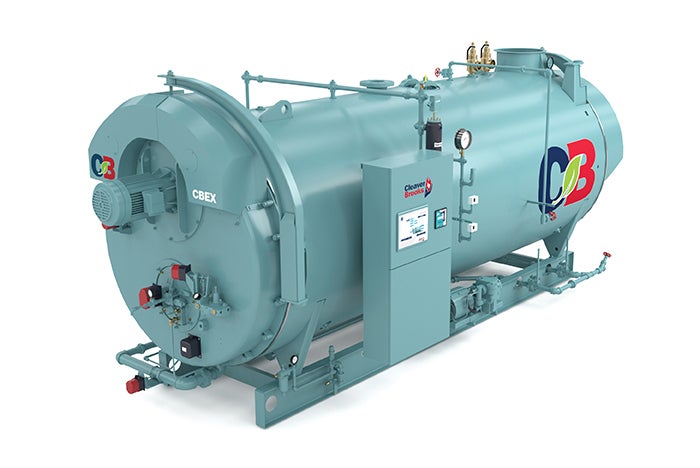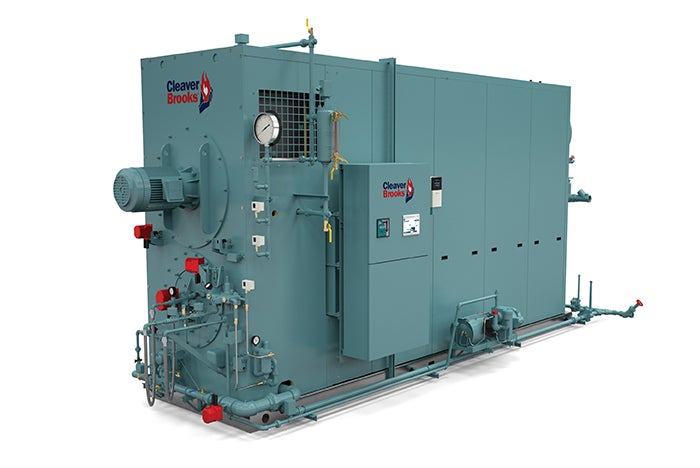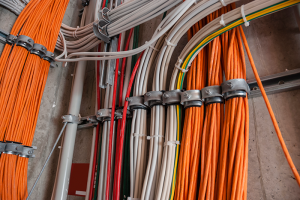Types of centralized steam boilers
There are two main types of boilers used for generating centralized steam in a health care facility — firetube boilers and watertube boilers. Each has its own characteristics, advantages and disadvantages, as described below.
Firetube boilers

Image courtesy of Cleaver-Brooks
Firetube boilers consist of a steel drum that holds water and includes one or more tubes through which hot gases pass from a fire/burner. The heat from the gases is transferred to the water in the drum through the walls of the tubes, creating steam or hot water.
Their characteristics include:
- An external burner that can be dual fuel for health care code compliance.
- Large volume of water with combustion within the tubes, which equates to high weight.
- Large physical footprint in plan and height.
- Large clearances on all sides.
- Less efficient than condensing water boilers.
- Prone to stress fractures caused by thermal shocking, which is the varying of the temperature of boilers in relatively short periods of time, meaning that they do not react well to being turned on and off.
- Recognized for their simple design and ease of operation.
- Vertical firetube variations that can be utilized but are not as widely used as the Scotch marine-style boilers.
Watertube boilers

Image courtesy of Cleaver-Brooks
Watertube boilers circulate water through tubes that are surrounded by hot combustion gases. The water is heated by these gases and turns into steam.
Their characteristics include:
- Can be manufactured with high-end materials to reduce thermal stressing under thermal shock.
- Can be specified to be cycled on and off more reliably.
- Can be erected in the field or modular in design.
- Can burn a wide range of fuel types.
- Can feature either an external or internal burner.
- Exhibits a higher base efficiency than firetube boilers — with only 1% to 2% annual fuel utilization efficiency.
- Recognized for their high thermal efficiency, high steam pressure capabilities and high steam generation rates.
- Take up a smaller footprint and are shorter than their equivalent firetube boilers, typically with tighter allowable side-to-side clearances than firetube boilers.
- Water is contained within tube sections, utilizing less water volume, resulting in less weight.
Check out the main article associated with this sidebar: "Hospital steam system function and operations."




